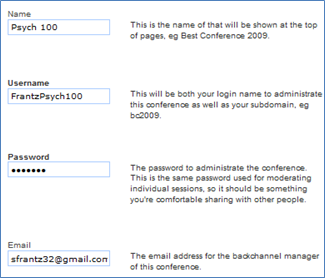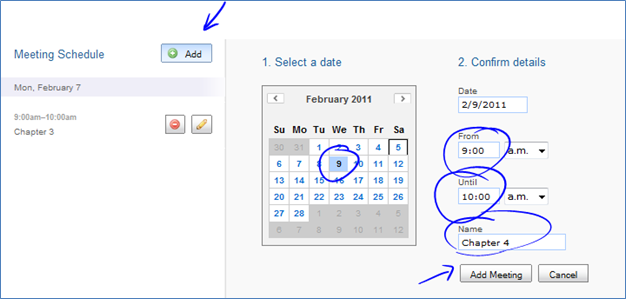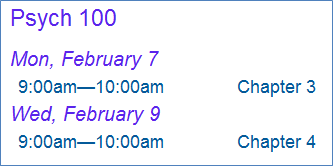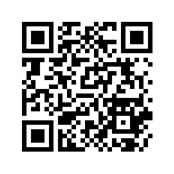Backchan.nl: Another Way to Communicate Live
You’re probably familiar with student response systems (aka clickers). Perhaps you even use PollEverywhere (see this blog post). Both allow you to get feedback from your students in real time. Back channel communication also lets your students communicate with you, but without you asking a question. And everyone else can see what others are saying. In real time.
There are a few different systems out there, but Backchan.nl (open source from MIT; free) is, of the ones I’ve seen, the one I like the most.
What it looks like
Give students the URL. It works fine with both computers and mobile devices. Here’s one I’ve created: http://techworkshop.backchan.nl. That takes you to this screen.
|
|
Here’s the QR code for that link if you’d like to see what it looks like on your mobile device. |
That link loads the screen below. Students and instructor see almost the same thing. The only difference is that if I log in I get a green checkmark and red x next to each submission. The red x deletes it. The green checkmark marks the submission as addressed, removing it from the main comment area, and moving it to the bottom of the list at the bottom of the screen.
Anyone who is participating can see the comments made by everyone else and can vote the comments up or down. Comments with the most up votes get moved to the top of the screen; those with the most down votes get moved to the bottom. That’s all there is to it. It’s pretty straight forward.

How to create a backchan.nl
When you visit Backchan.nl, there is a “Make a Backchan.nl” button. Clicking it loads this page.
Name: This is the title on the webpage. Username: The URL I’d give students would be http://FrantzPsych100.backchan.nl. Password: I’d use this to log in (to get the green checkmark and red x). [Important: Keep track of your password. There is no way to recover it if you forget it. ] Email: I don’t know why they ask for this. The participants aren’t given it anywhere, and it’s not used to log in to your backchan.nl.

Once created, you’ll be prompted to “add a meeting.” I would then go in and add meetings for each class session.

Now when students follow this URL http://FrantzPsych100.backchan.nl, this is what they’ll see. They just click on the appropriate link, and they’re in.

Considerations
Moderators. If I didn’t want to monitor the comments while lecturing, I could also give the backchan.nl password to my teaching assistants (if I had any) or a ‘student moderator for the day’ who would alert me to any popular questions or comments.
Use while watching a video. Students could offer their comments or questions during video as a sort of live journal. All of the comments could be addressed afterward or I could pause the video to address the comments or questions.
Quiet students. I wonder if shy students or students who are non-native English speakers would be more inclined to use this forum than to raise their hands in class.
Address comments after class. I could look at all the questions and comments after class and address them in the next class or on my class listserv or discussion board.
Inappropriate comments. In one workshop one participant said that he tried a live twitter feed during class. He said he got a lot of comments like, “Can we leave early today?” Those students were anonymous. To ensure that students log in with their real names, you could offer participation credit for posting comments or questions. Or if you have a moderator, they could just delete those kinds of comments as they appear.
Mobile technology. How many students have the ability to participate in using this technology? I recently (January 2011) asked my students how many of them could access the internet right now in class: 92%.
Useful educational tool or another distraction? Will it work to engage students more with the material or will it be just one more thing that keeps them from paying attention? I don’t know, but it’s an empirical question.
Presentations
In my future presentations and workshops, I’m going to include this as a communication tool. I know that I’ve been in many presentations where I had a comment or question but didn’t want to interrupt the speaker, and then there wasn’t time at the end for questions.
[Thanks to Richard Byrne at his Free Tech for Teachers blog for the heads up on this technology.]

